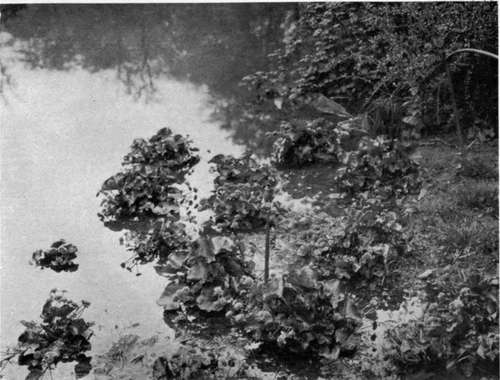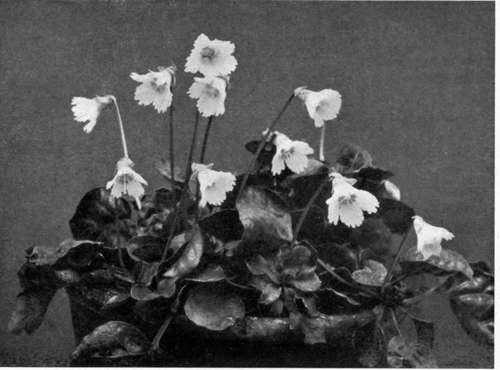Grass And Fern Effects
Description
This section is from the book "What England Can Teach Us About Gardening", by Wilhelm Miller. Also available from Amazon: What England Can Teach Us About Gardening.
Grass And Fern Effects
I have before me an English catalogue which offers fifty species of grasses, sedges, rushes, and hardy bamboos, suitable for wet places. A good many of them are variegated with white and yellow and these my taste would reject. There is beauty enough in the green-leaved grasses, especially the bamboos, particularly the one for which I proposed the name Riviere's bamboo, viz., Phyl-lostachys viridi-glaucescens. This is noted for its great, billowy masses. Mr. Lynch, at Cambridge, told me it is the greatest cold-resister among the bamboos, and the best for large masses at the water side.

THE BOG PIMPERNEL {Anaguilis tenella). A BRITISH CREEPER THAT IS COVERED WITH HUNDREDS OF TINY PINK FLOWERS. IVER HEATH. See page 297.

MOUNTAIN FLEECE Polygonum amplexicaule. A HIMALAYAN PLANT WITH SPIKES ABOUT SIX INCHES LONG OF ROSY FLOWERS IN MIDSUMMER. IVER HEATH.

A DOUBLE-FLOWERED VARIETY OF THE MARSH MARIGOLD {Caltha palustris), ILLUSTRA TING HOW THE ENGLISH LOVE AND IMPROVE AMERICAN PLANTS. See page 202.

SHORTIA GALACIFOLIA IS ONE OF THE MOST EXQUISITE MEMBERS OF THE HEATH FAMILY. ITS EVERGREEN FOLIAGE BRONZES BEAUTIFULLY IN WINTER. IT CAN BE GROWN IN WOODS, RHODODENDRON BEDS, AND PEAT GARDENS. See page 80.
New to me was the perennial wild rice (Zizania latifolia), which makes a magnificent specimen plant, growing to the height of a man and having a bolder and wider leaf than the commoner species (Z. aquatica), which is an annual. (Plate 35.)
Somehow I failed to see that well-known British plant, the blue-lyme grass (Elymus arenarius), which is noted for its blue-gray foliage. It makes clumps about four feet high and some gardeners think it looks best if the flowers are removed.
As to ferns, the bog garden is just the place for them, since they need plenty of water and shade for their grandest development. I must have seen two dozen species in English bog gardens, and I know that fifty are available, but for use on a great scale I saw nothing better than our own cinnamon and royal ferns. I wish, however, that my friends would experiment on a small scale with the hart's tongue fern, which is pictured at plate 98.
Continue to:
Tags
garden, flowers, plants, England, effects, foliage, gardening
